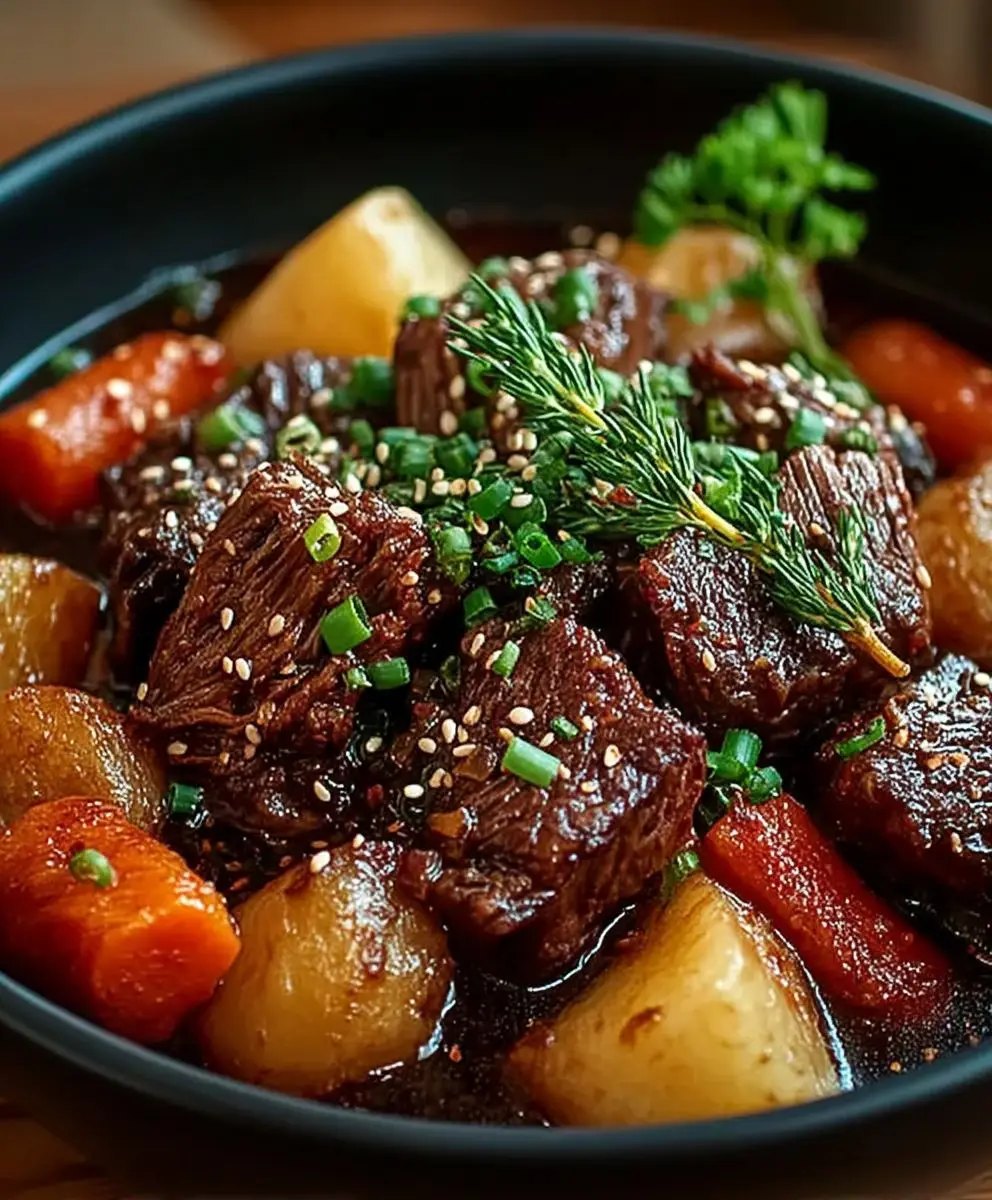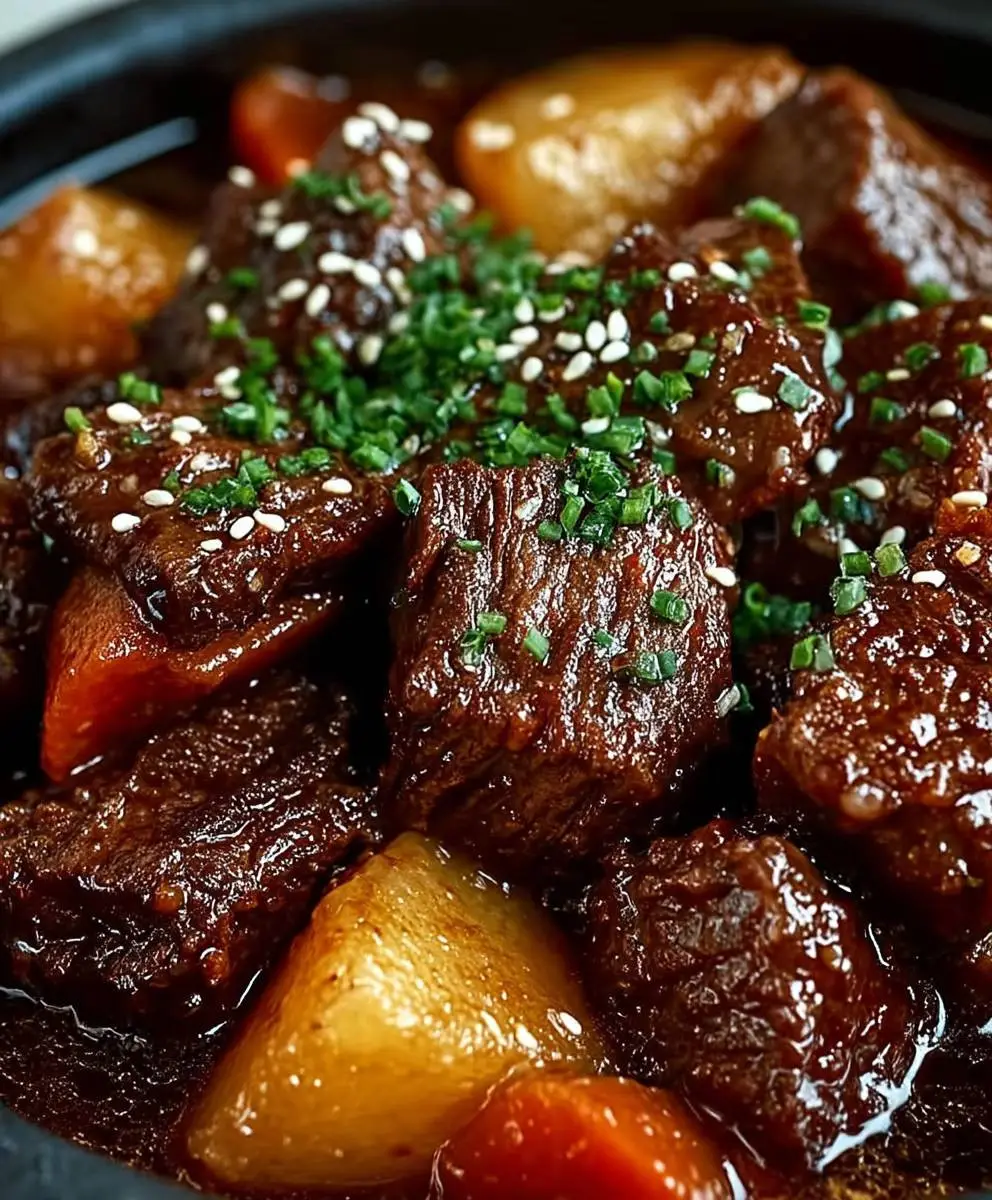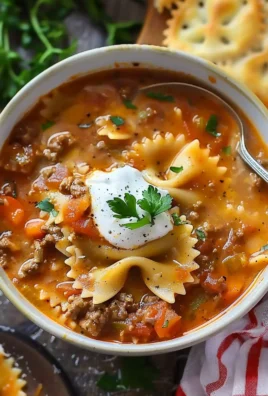Korean Pot Roast: Prepare to be transported to a world of savory-sweet deliciousness with this incredibly tender and flavorful dish! Imagine fork-tender beef, infused with the rich and complex flavors of soy sauce, garlic, ginger, and a touch of sweetness – a symphony of tastes that will leave you craving more. Have you ever wondered how to elevate a classic comfort food into something truly extraordinary?
Korean cuisine boasts a rich tapestry of flavors, often balancing savory, sweet, spicy, and umami notes. This Korean Pot Roast recipe draws inspiration from traditional Korean braising techniques, adapting them to create a dish that’s both familiar and excitingly new. While not a direct translation of a specific Korean dish, it captures the essence of Korean flavors in a comforting pot roast format.
People adore this dish for several reasons. First, the melt-in-your-mouth texture of the beef is simply irresistible. Second, the combination of savory and slightly sweet flavors is incredibly satisfying and appeals to a wide range of palates. Finally, it’s a relatively hands-off recipe, perfect for busy weeknights or lazy weekends. Simply sear the beef, combine the ingredients, and let your oven (or slow cooker!) do the work. Get ready to experience a pot roast like never before!
Ingredients:
- 3-4 lb chuck roast, trimmed of excess fat
- 1 large onion, roughly chopped
- 4 cloves garlic, minced
- 1 (1-inch) piece of ginger, peeled and minced
- 1/4 cup soy sauce
- 1/4 cup brown sugar, packed
- 2 tablespoons sesame oil
- 1 tablespoon gochujang (Korean chili paste)
- 1 tablespoon gochugaru (Korean chili flakes), optional for extra spice
- 1 teaspoon black pepper
- 4 cups beef broth
- 1 cup water
- 2 carrots, peeled and chopped into 1-inch pieces
- 2 russet potatoes, peeled and chopped into 1-inch pieces
- 1/2 lb shiitake mushrooms, stemmed and sliced
- 4 scallions, thinly sliced, for garnish
- Sesame seeds, for garnish
- Cooked rice, for serving
Preparing the Korean Pot Roast
- Prepare the Chuck Roast: Pat the chuck roast dry with paper towels. This helps to get a good sear. Season generously with salt and pepper on all sides.
- Sear the Roast: Heat 1 tablespoon of sesame oil in a large Dutch oven or heavy-bottomed pot over medium-high heat. Once the oil is shimmering, carefully place the chuck roast in the pot. Sear for 3-4 minutes per side, until deeply browned. This step is crucial for developing rich flavor. Don’t overcrowd the pot; sear in batches if necessary. Remove the roast from the pot and set aside.
- Sauté Aromatics: Add the remaining 1 tablespoon of sesame oil to the pot. Add the chopped onion and cook until softened and translucent, about 5-7 minutes. Add the minced garlic and ginger and cook for another minute, until fragrant. Be careful not to burn the garlic.
- Create the Braising Liquid: In a medium bowl, whisk together the soy sauce, brown sugar, gochujang, gochugaru (if using), and black pepper. Pour this mixture into the pot with the onions, garlic, and ginger. Stir to combine and cook for 1-2 minutes, allowing the flavors to meld.
- Add the Broth and Water: Pour in the beef broth and water. Stir to scrape up any browned bits from the bottom of the pot. This is where a lot of flavor resides!
- Return the Roast: Carefully place the seared chuck roast back into the pot, ensuring it’s mostly submerged in the braising liquid. If necessary, add a little more beef broth or water to cover.
Braising the Pot Roast
- Bring to a Simmer: Bring the liquid to a simmer over medium heat. Once simmering, reduce the heat to low, cover the pot tightly, and braise for 3-4 hours, or until the chuck roast is fork-tender. The exact cooking time will depend on the size and thickness of your roast. Check the roast periodically and add more liquid if needed to prevent it from drying out.
- Add the Vegetables: After the roast has braised for 2 hours, add the chopped carrots and potatoes to the pot. Continue to braise for another 1-2 hours, or until the vegetables are tender.
- Add the Mushrooms: About 30 minutes before the end of the cooking time, add the sliced shiitake mushrooms to the pot. This allows them to cook through without becoming too mushy.
Shredding and Serving
- Remove the Roast: Once the chuck roast is incredibly tender, carefully remove it from the pot and place it on a cutting board. Let it rest for 10-15 minutes before shredding. This allows the juices to redistribute, resulting in a more flavorful and tender roast.
- Shred the Roast: Using two forks, shred the chuck roast into bite-sized pieces. Discard any large pieces of fat or gristle.
- Thicken the Sauce (Optional): If the braising liquid is too thin for your liking, you can thicken it. Remove about 1 cup of the liquid from the pot and whisk it with 1-2 tablespoons of cornstarch in a small bowl until smooth. Pour the cornstarch slurry back into the pot and stir well. Bring the liquid to a simmer over medium heat and cook for a few minutes, until thickened.
- Return the Shredded Roast: Return the shredded chuck roast to the pot with the vegetables and braising liquid. Stir to combine and heat through.
- Serve: Serve the Korean pot roast hot over cooked rice. Garnish with sliced scallions and sesame seeds. You can also add a dollop of gochujang on top for extra spice, if desired. Kimchi makes a great side dish!
Tips for the Best Korean Pot Roast
- Choose the Right Cut of Meat: Chuck roast is the best cut for pot roast because it has a good amount of marbling, which renders down during the long braising process, resulting in a tender and flavorful dish.
- Don’t Skip the Sear: Searing the chuck roast is essential for developing a rich, deep flavor. Make sure to get a good sear on all sides before braising.
- Use High-Quality Ingredients: The quality of your ingredients will directly impact the flavor of your pot roast. Use good quality soy sauce, gochujang, and beef broth.
- Adjust the Spice Level: If you’re sensitive to spice, start with a smaller amount of gochujang and gochugaru. You can always add more later.
- Braise Low and Slow: Braising the pot roast at a low temperature for a long period of time is key to achieving a tender and flavorful result.
- Let the Roast Rest: Allowing the roast to rest before shredding is important for retaining its juices and preventing it from drying out.
- Make it Ahead: Pot roast is a great dish to make ahead of time. The flavors actually improve as it sits. You can make it a day or two in advance and reheat it before serving.
- Customize the Vegetables: Feel free to add other vegetables to your pot roast, such as daikon radish, parsnips, or sweet potatoes.
- Serve with Your Favorite Sides: In addition to rice, Korean pot roast pairs well with other Korean side dishes, such as kimchi, pickled vegetables, and seasoned spinach.
Variations
- Spicy Korean Pot Roast: Add more gochujang and gochugaru to the braising liquid for a spicier dish. You can also add a chopped chili pepper.
- Sweet Korean Pot Roast: Add a little more brown sugar or honey to the braising liquid for a sweeter flavor.
- Korean Pot Roast with Noodles: Serve the pot roast over noodles instead of rice. Udon noodles or glass noodles work well.
- Instant Pot Korean Pot Roast: You can also make this recipe in an Instant Pot. Sear the roast as directed, then add the remaining ingredients to the Instant Pot. Cook on high pressure for 60-75 minutes, followed by a natural pressure release for 15 minutes.
Serving Suggestions
- Serve with a side of kimchi.
- Offer a variety of Korean side dishes (banchan).
- Garnish with toasted sesame seeds and sliced green onions.
- Serve with a dollop of ssamjang (Korean dipping sauce).
- Offer a bowl of hot gochujang for those who want extra spice.

Conclusion:
Well, there you have it! I truly believe this Korean Pot Roast is a recipe you absolutely need in your repertoire. It’s not just another pot roast; it’s a flavor explosion, a comforting hug in a bowl, and a surprisingly simple way to impress your family and friends. The combination of savory beef, sweet and spicy gochujang, and umami-rich soy sauce creates a depth of flavor that’s simply irresistible. Trust me, the aroma alone will have everyone gathering in the kitchen, eager to dig in.
Why is this Korean Pot Roast a Must-Try?
It’s all about the balance. The tender, fall-apart beef is perfectly complemented by the vibrant Korean-inspired sauce. It’s a dish that’s both familiar and exciting, offering a unique twist on a classic comfort food. Plus, it’s incredibly versatile! You can easily adjust the spice level to your liking, making it perfect for even the most sensitive palates. And let’s be honest, who doesn’t love a one-pot meal that requires minimal effort but delivers maximum flavor?
Serving Suggestions and Variations:
Now, let’s talk about how to serve this masterpiece. My personal favorite is to shred the beef and serve it over a bed of fluffy white rice, drizzled with extra sauce from the pot. A sprinkle of toasted sesame seeds and some thinly sliced green onions adds a touch of freshness and visual appeal. But the possibilities are endless!
Here are a few other ideas to get your creative juices flowing:
* Korean Pot Roast Tacos: Shred the beef and pile it into warm tortillas with kimchi slaw and a drizzle of sriracha mayo.
* Korean Pot Roast Bowls: Combine the shredded beef with quinoa or brown rice, sautéed vegetables (like bell peppers and mushrooms), and a fried egg for a complete and satisfying meal.
* Korean Pot Roast Noodles: Toss the shredded beef with your favorite noodles (udon, ramen, or even spaghetti) and a generous amount of the sauce.
* Korean Pot Roast Sliders: Serve the shredded beef on mini brioche buns with a dollop of kimchi and a sprinkle of sesame seeds for a fun and flavorful appetizer.
* Spice it Up: If you’re a fan of heat, add a pinch of gochugaru (Korean chili flakes) or a finely chopped jalapeño to the sauce.
* Sweeten it Up: For a sweeter flavor profile, add a tablespoon of brown sugar or honey to the sauce.
* Vegetable Variations: Feel free to add other vegetables to the pot roast, such as potatoes, carrots, or parsnips. Just be sure to adjust the cooking time accordingly.
Don’t be afraid to experiment and make this recipe your own! That’s the beauty of cooking – it’s all about creating something that you and your loved ones will enjoy.
Your Turn to Try This Korean Pot Roast!
I’m so excited for you to try this recipe and experience the deliciousness for yourself. I’m confident that it will become a new family favorite. So, gather your ingredients, put on some music, and get ready to create a truly unforgettable meal.
Once you’ve made it, I would absolutely love to hear about your experience! Did you make any variations? What did you serve it with? What did your family think? Share your photos and stories in the comments below. I can’t wait to see what you create! Happy cooking!
Korean Pot Roast: A Delicious & Easy Recipe
Tender, flavorful Korean Pot Roast featuring chuck roast braised in a savory-sweet gochujang-infused sauce with vegetables. Perfect served over rice with scallions and sesame seeds.
Ingredients
Instructions
Recipe Notes
- Chuck roast is the best cut for pot roast.
- Searing the chuck roast is essential for developing a rich, deep flavor.
- Use good quality soy sauce, gochujang, and beef broth.
- Adjust the spice level to your preference.
- Braising the pot roast at a low temperature for a long period of time is key to achieving a tender and flavorful result.
- Allowing the roast to rest before shredding is important for retaining its juices and preventing it from drying out.
- Pot roast is a great dish to make ahead of time.
- Feel free to add other vegetables to your pot roast, such as daikon radish, parsnips, or sweet potatoes.
- Serve with your favorite Korean side dishes, such as kimchi, pickled vegetables, and seasoned spinach.




